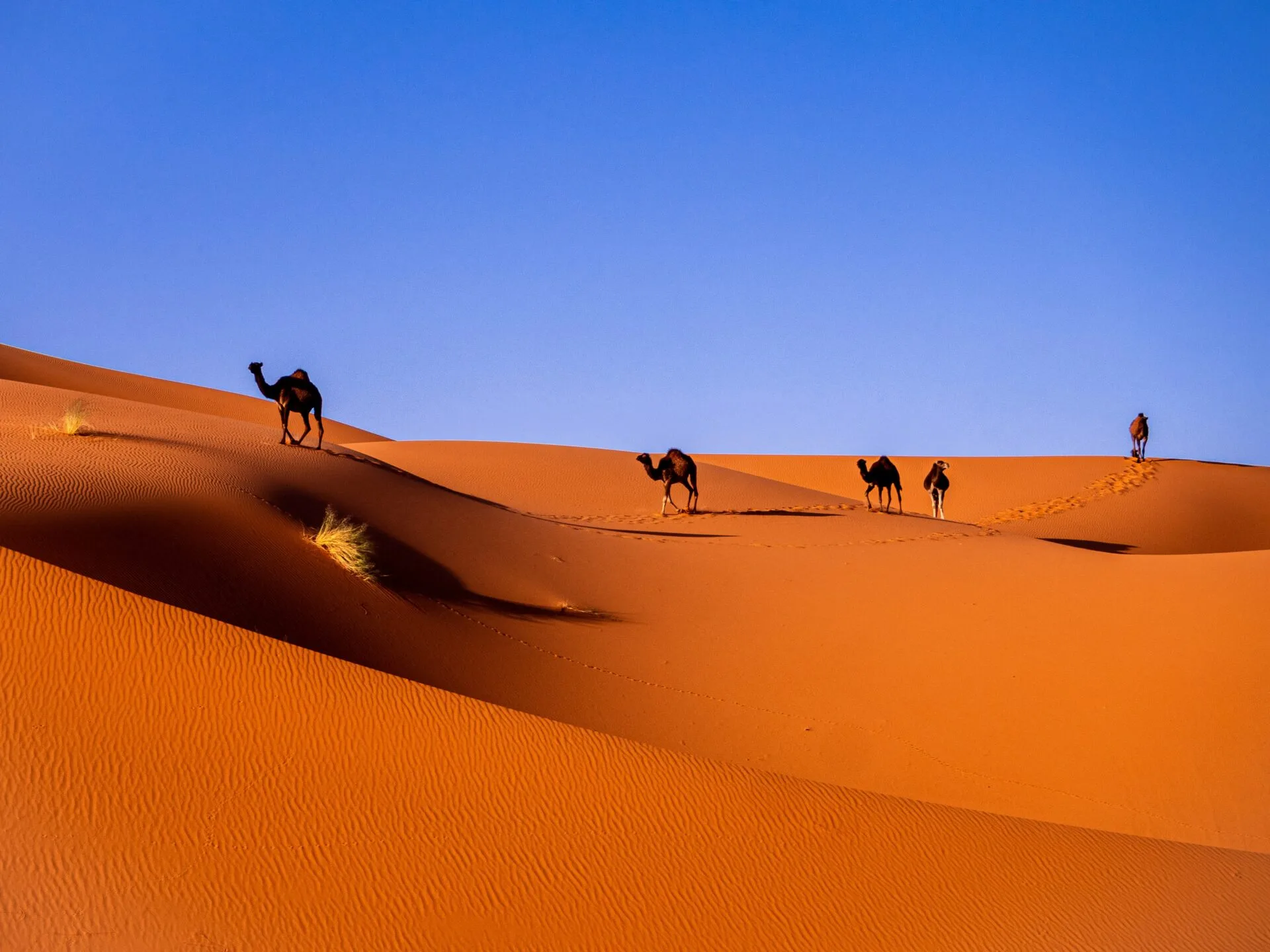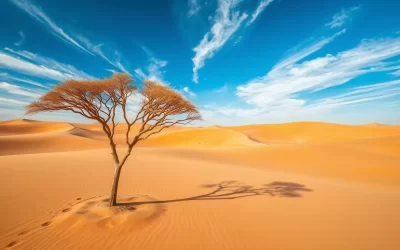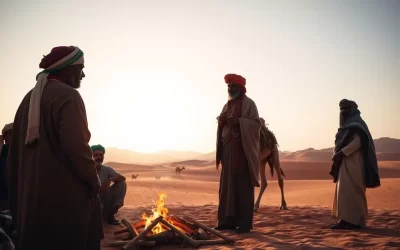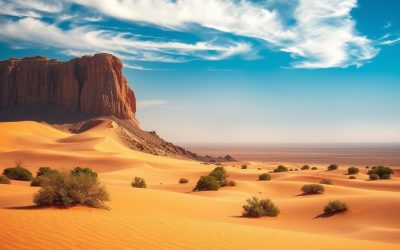Did you know Western Sahara has one of the lowest population densities on Earth, with just 2 people per square kilometer? This vast, disputed territory where the Sahara Desert meets the Atlantic Ocean offers intrepid travelers a rare glimpse into one of the world’s last great frontiers. From the windswept dunes of the White Dune to the azure waters of Dakhla Lagoon, Western Sahara presents a landscape of stark beauty and surprising diversity for those willing to venture off the beaten path.
Getting to Western Sahara
Laayoune Hassan I International Airport, the main gateway to Western Sahara
Reaching Western Sahara requires some planning, but the journey is part of the adventure. The territory has two main international airports: Laayoune Hassan I International Airport in the north and Dakhla International Airport in the south. Royal Air Maroc offers regular flights from Casablanca, while Binter Canarias connects the region to the nearby Canary Islands.
Ready to Start Your Western Sahara Adventure?
Find the best flight deals to Western Sahara’s airports from major international hubs.
For overland travelers, regular buses connect Moroccan cities like Marrakech, Casablanca, and Agadir to Laayoune and Dakhla. The journey from Agadir to Laayoune takes approximately 12 hours, while continuing to Dakhla adds another 9 hours. Companies like CTM and Supratours offer comfortable, air-conditioned coaches with scheduled rest stops.
It’s important to note that Western Sahara is considered by Morocco as part of its territory, so there are no formal border crossings when entering from Morocco. However, if you’re planning to continue south to Mauritania, you’ll need to prepare for a proper international border crossing at Guerguerat.
Best Time to Visit Western Sahara
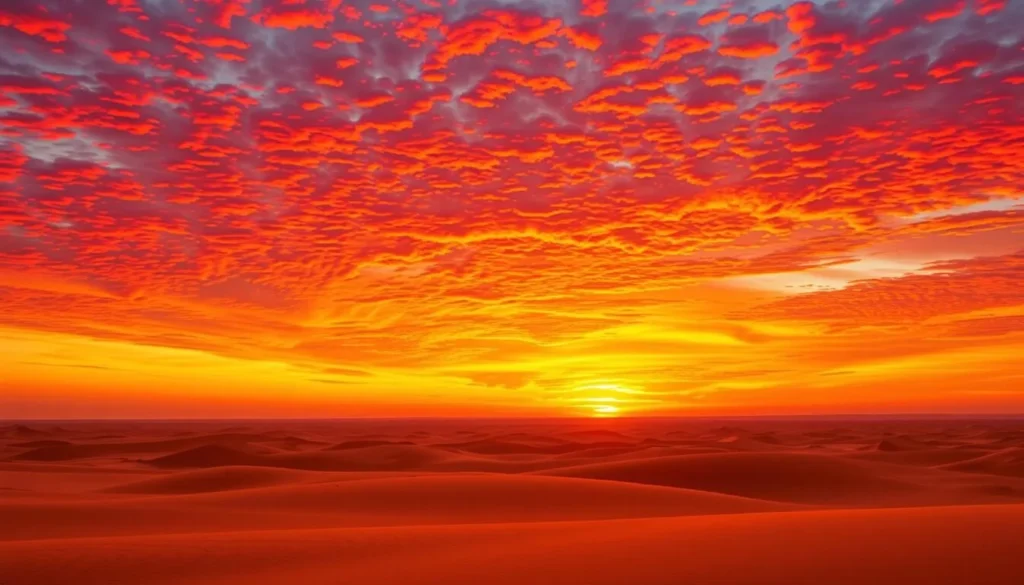
Spectacular sunset over the Western Sahara desert
Western Sahara experiences a hot desert climate with minimal rainfall throughout the year. The best time to visit is between October and April when temperatures are more moderate, ranging from 15°C to 25°C (59°F to 77°F) during the day.
| Season | Months | Temperature | Conditions | Recommendation |
| Winter | December-February | 15-22°C (59-72°F) | Mild days, cool nights | Ideal for sightseeing |
| Spring | March-May | 18-28°C (64-82°F) | Warming up, occasional winds | Good for all activities |
| Summer | June-September | 25-35°C (77-95°F) | Hot, dry, strong winds | Avoid unless heat-tolerant |
| Fall | October-November | 20-28°C (68-82°F) | Cooling down, pleasant | Excellent for all activities |
Summer months (June to September) can be extremely hot, with temperatures often exceeding 35°C (95°F). The coastal areas benefit from Atlantic breezes, making them more tolerable than inland regions. Winter nights, especially in the desert, can be surprisingly cold, sometimes dropping below 10°C (50°F), so pack layers if traveling during this time.
The region is known for occasional sandstorms, particularly during spring months. These can reduce visibility and disrupt travel plans, so it’s wise to build some flexibility into your itinerary.
Top Attractions in Western Sahara
1. Dakhla Peninsula and Lagoon
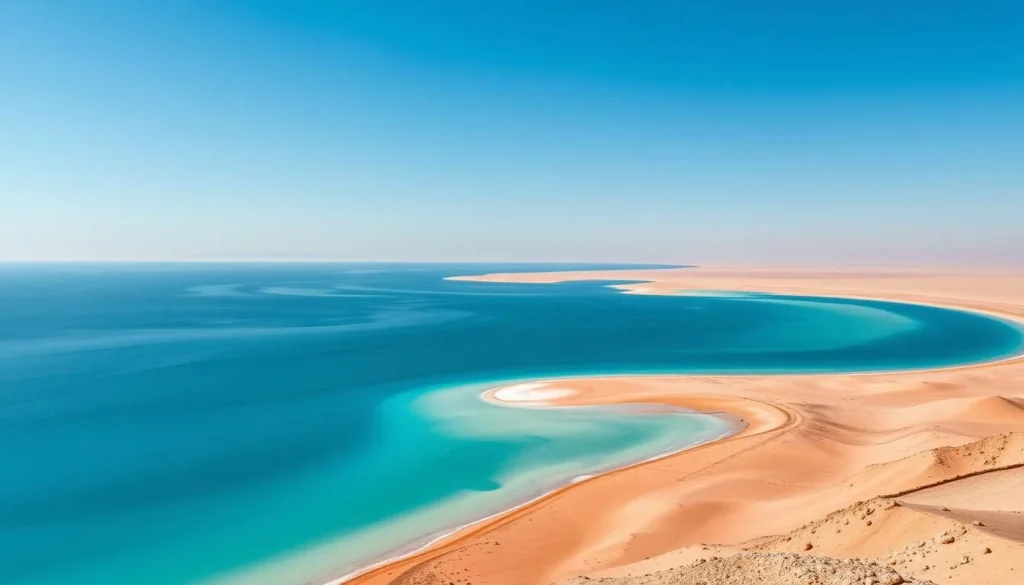
The stunning Dakhla Lagoon, a paradise for water sports enthusiasts
The jewel of Western Sahara, Dakhla sits on a narrow peninsula surrounded by the Atlantic Ocean. The lagoon’s calm, shallow waters create perfect conditions for kitesurfing and windsurfing, attracting enthusiasts from around the world. Even if you’re not into water sports, the contrast between the azure waters and surrounding desert creates a mesmerizing landscape worth experiencing.
Experience Dakhla’s Water Adventures
Book guided tours, kitesurfing lessons, and other exciting activities in Dakhla.
2. The White Dune (La Dune Blanche)
The White Dune, a unique natural formation south of Dakhla
Located about 25 kilometers south of Dakhla, this natural wonder is a massive white sand dune that rises dramatically from a shallow lagoon. At high tide, the dune appears to float on water, creating a surreal, otherworldly landscape. Climbing to the top rewards you with panoramic views of the surrounding desert and ocean. Local guides often prepare traditional Sahrawi tea here, adding to the magical experience.
3. Laayoune (El Aaiún)
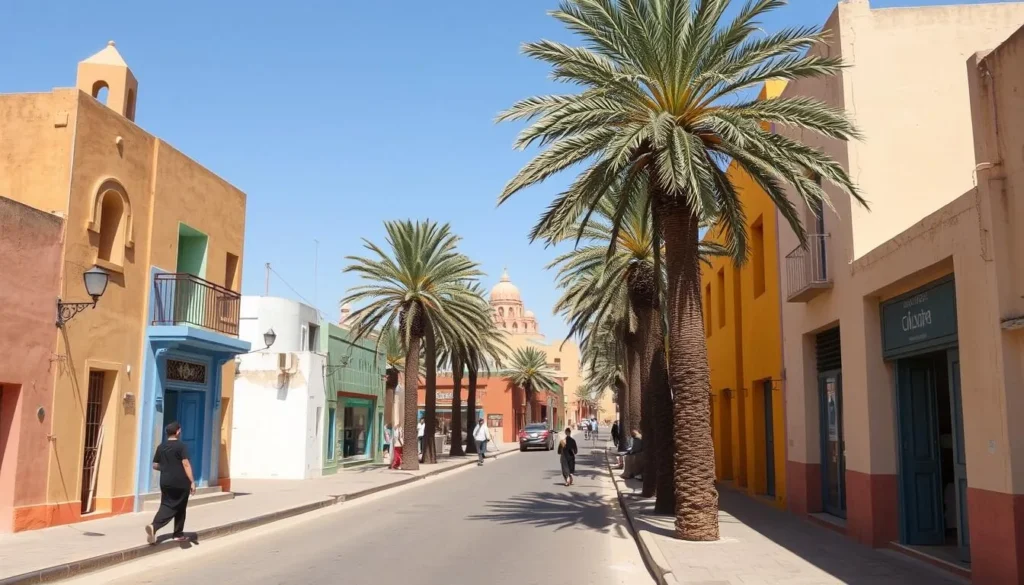
Laayoune, the largest city and administrative center of Western Sahara
As the largest city in Western Sahara, Laayoune offers a glimpse into urban life in this remote region. Visit the Grand Mosque with its distinctive square Almohad-style minaret, stroll through the bustling markets, and admire the colorful street art that adorns many buildings. The Spanish colonial influence is still visible in some architecture, including the St. Francis of Assisi Catholic Church, a rare Christian place of worship in this predominantly Muslim region.
4. Porto Rico Beach
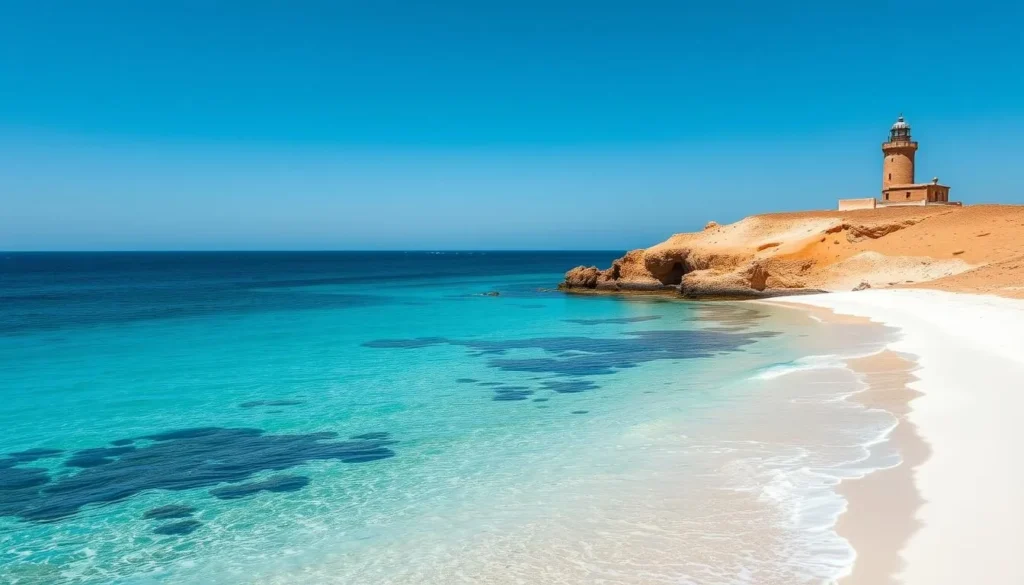
Porto Rico Beach with its abandoned Spanish-era lighthouse
Located about 60 kilometers south of Dakhla, Porto Rico Beach offers a stunning stretch of white sand and crystal-clear waters. The beach is overlooked by an abandoned Spanish-era lighthouse, adding a touch of history to this natural beauty. The chalk cliffs that line the beach create a dramatic backdrop, and the location just north of the Tropic of Cancer makes it a geographically significant spot.
5. Imlili Sebkha
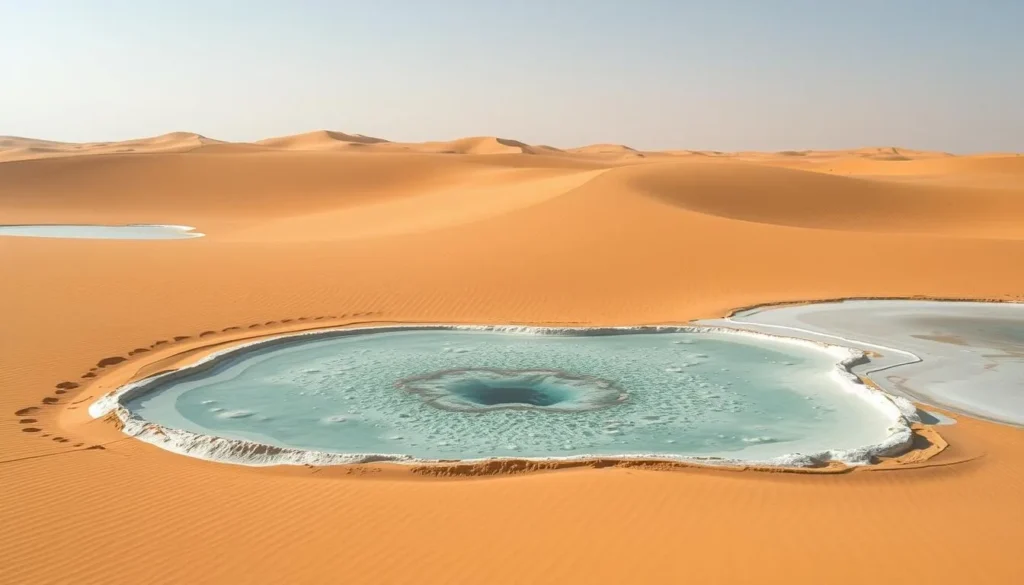
The unique salt water pools of Imlili Sebkha in the middle of the Sahara Desert
One of Western Sahara’s most unusual natural phenomena, the Sebkha of Imlili consists of over 160 small pools of hypersaline water in the middle of the Sahara Desert. What makes these pools truly remarkable is that they’re home to a species of fish that has adapted to the extreme conditions. These fish are believed to be relics from the Holocene epoch when the Sahara was much greener. Accessible only by 4WD with a knowledgeable guide, this remote wonder is well worth the journey.
Cultural Experiences
Sahrawi Traditions and Lifestyle
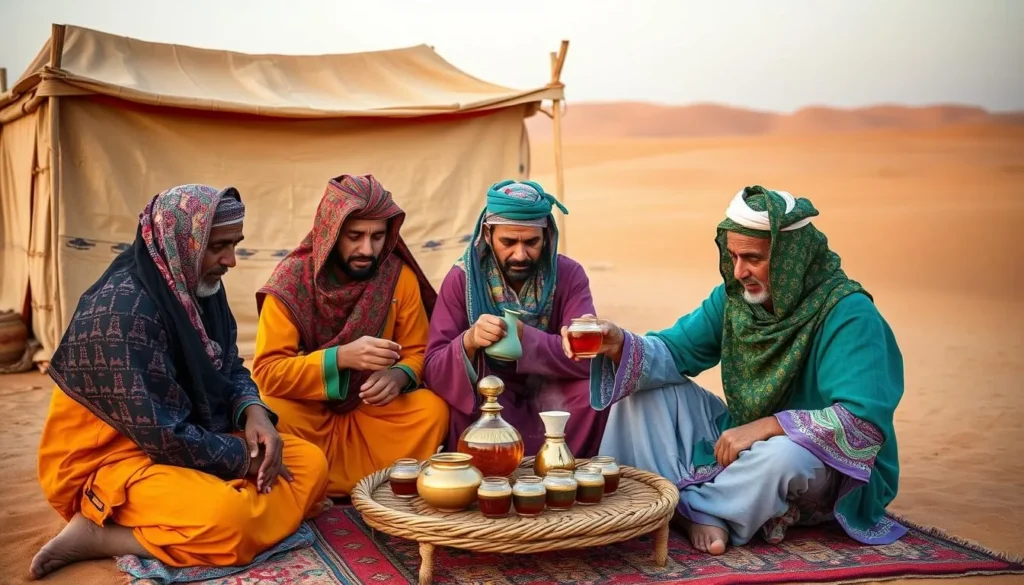
Sahrawi people preparing traditional tea in the desert
The indigenous Sahrawi people have a rich nomadic heritage that has adapted to the harsh desert environment over centuries. While many now live in urban areas, traditional customs remain an important part of their identity. Experiencing Sahrawi hospitality typically involves the ceremonial preparation of mint tea, a ritual that can take up to 30 minutes as the tea is brewed three times (the saying goes: “The first cup is bitter like life, the second is sweet like love, and the third is gentle like death”).
If invited into a Sahrawi home or tent, you might be offered camel meat, couscous, or dates. The traditional Sahrawi clothing includes colorful robes and distinctive head coverings that protect from the sun and sand. Learning to tie a Sahrawi scarf is both a practical skill for desert travel and a way to connect with local culture.
Local Markets and Crafts
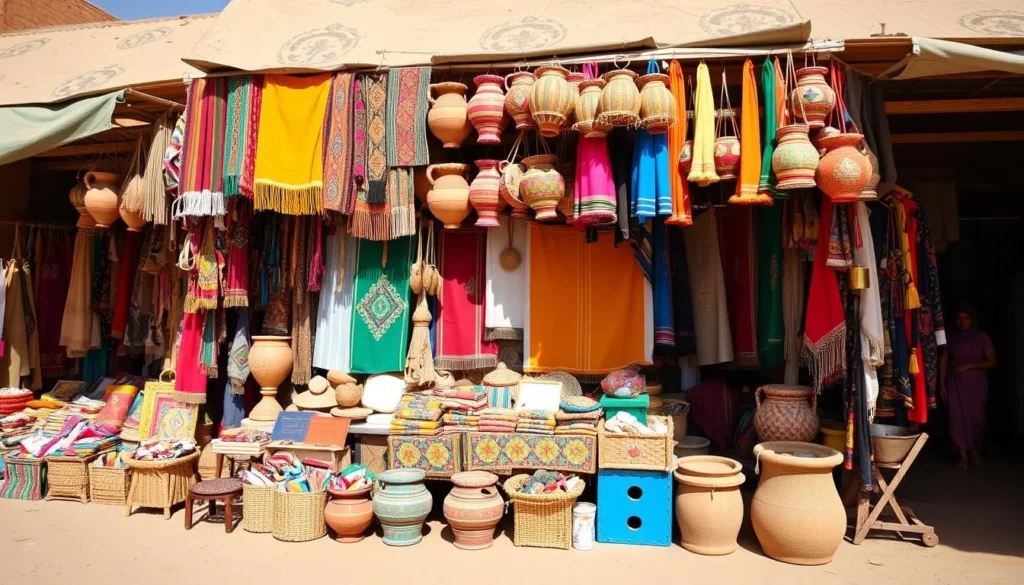
Traditional crafts and textiles at a market in Laayoune
The markets of Laayoune and Dakhla offer opportunities to purchase traditional Sahrawi crafts, including woven textiles, leather goods, and silver jewelry. These markets are also excellent places to observe daily life and interact with locals. While shopping, remember that bargaining is expected but should be conducted respectfully.
Outdoor Adventures in Western Sahara
Kitesurfing and Watersports
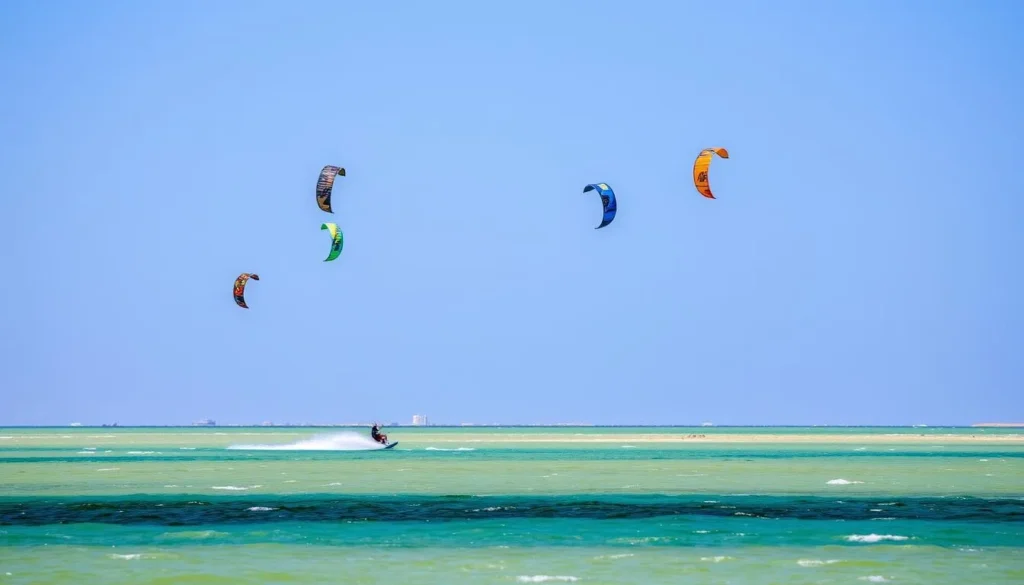
Kitesurfers taking advantage of the perfect wind conditions at Dakhla Lagoon
Dakhla has earned international recognition as one of the world’s premier kitesurfing destinations. The consistent winds, shallow lagoon, and year-round good weather create ideal conditions for both beginners and experts. Numerous kitesurfing schools offer equipment rental and lessons, with many camps providing all-inclusive packages that include accommodation, meals, and instruction.
Book Your Kitesurfing Adventure
Find the best kitesurfing packages and water sports activities in Dakhla.
Desert Excursions
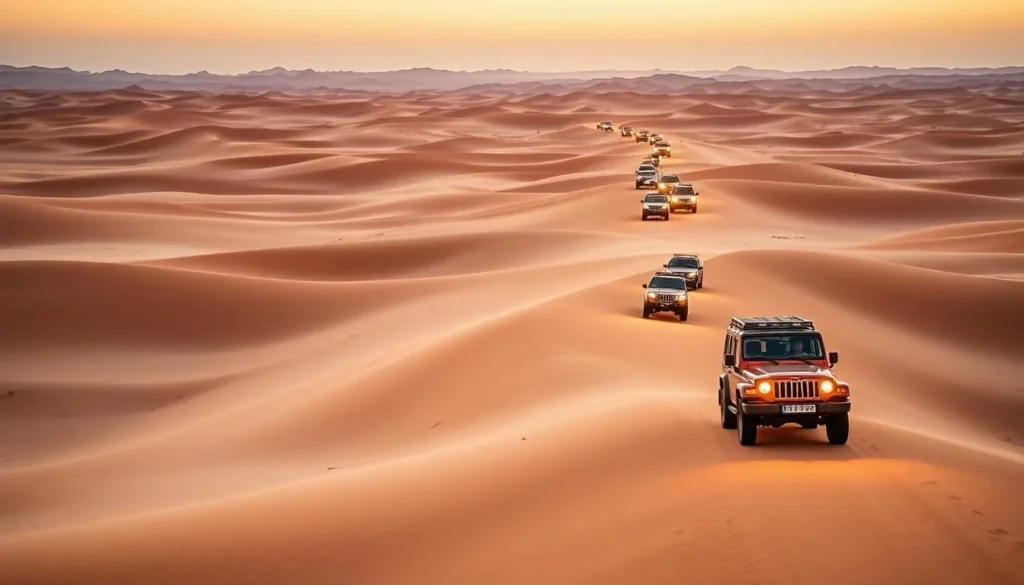
4WD excursion through the dramatic desert landscape
Exploring the Sahara Desert is a must-do activity in Western Sahara. Guided 4WD excursions from Dakhla can take you to remote attractions like the White Dune, Imlili Sebkha, and Porto Rico Beach. These tours typically include traditional tea ceremonies and opportunities to meet nomadic families. For the full desert experience, consider an overnight trip with camping under the stars – the lack of light pollution makes for spectacular stargazing.
Camel Trekking
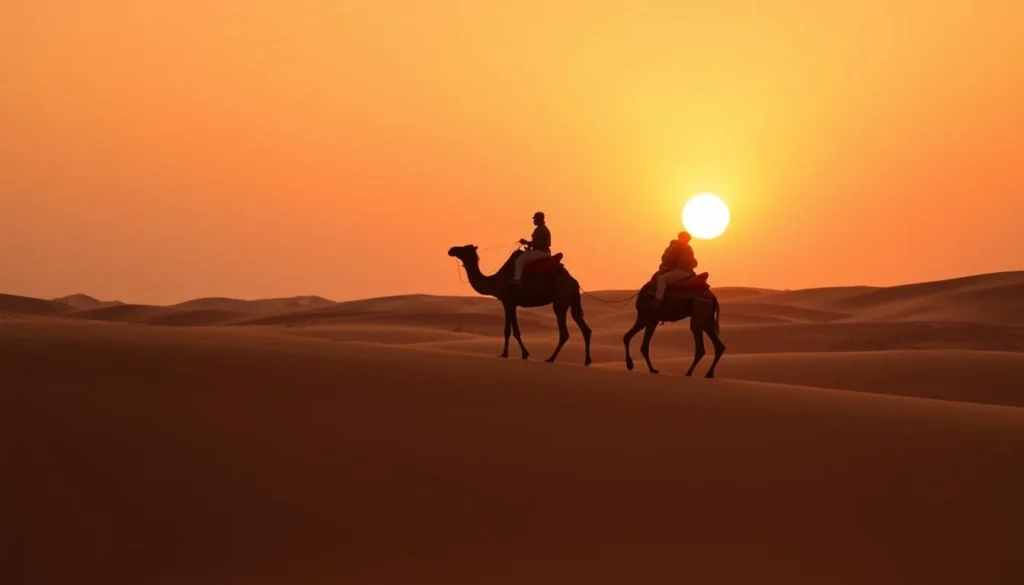
Traditional camel trek through the sand dunes at sunset
For a more traditional desert experience, camel trekking offers a slower-paced way to appreciate the landscape. Several operators in both Laayoune and Dakhla offer camel rides ranging from a few hours to multi-day expeditions. The rhythmic pace of camel travel allows you to fully absorb the vastness and tranquility of the desert environment.
Where to Stay in Western Sahara
Dakhla Accommodations
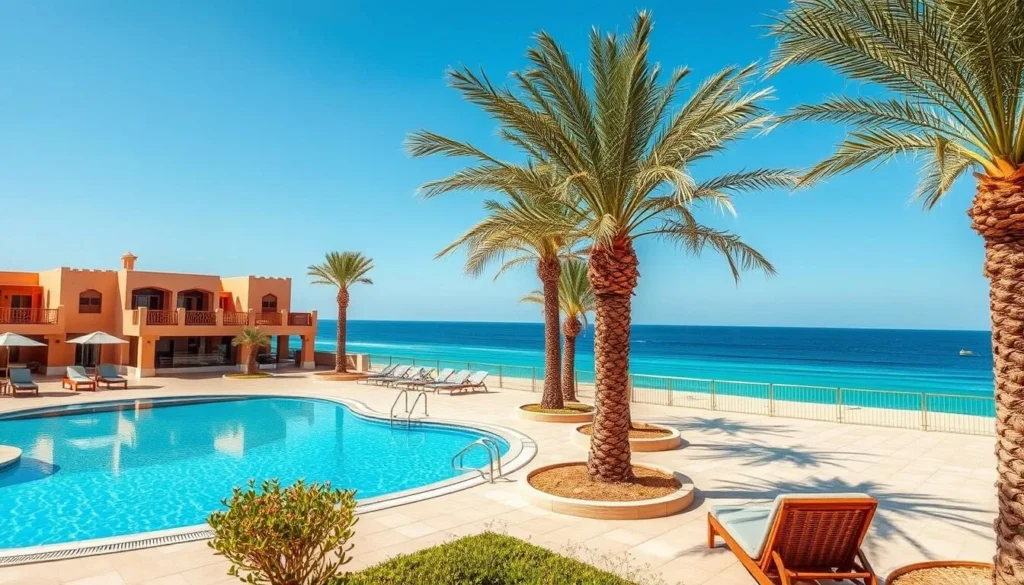
Beachfront accommodation in Dakhla with traditional architectural elements
Dakhla offers the widest range of accommodation options in Western Sahara. For water sports enthusiasts, the kitesurfing camps north of the city provide all-inclusive packages with beachfront locations. In the city itself, you’ll find a mix of modern hotels and traditional guesthouses like Dar Rio Oro, which offers authentic Moroccan architecture and home-cooked meals.
Find Your Perfect Stay in Western Sahara
Browse accommodations from luxury hotels to authentic guesthouses.
Laayoune Accommodations
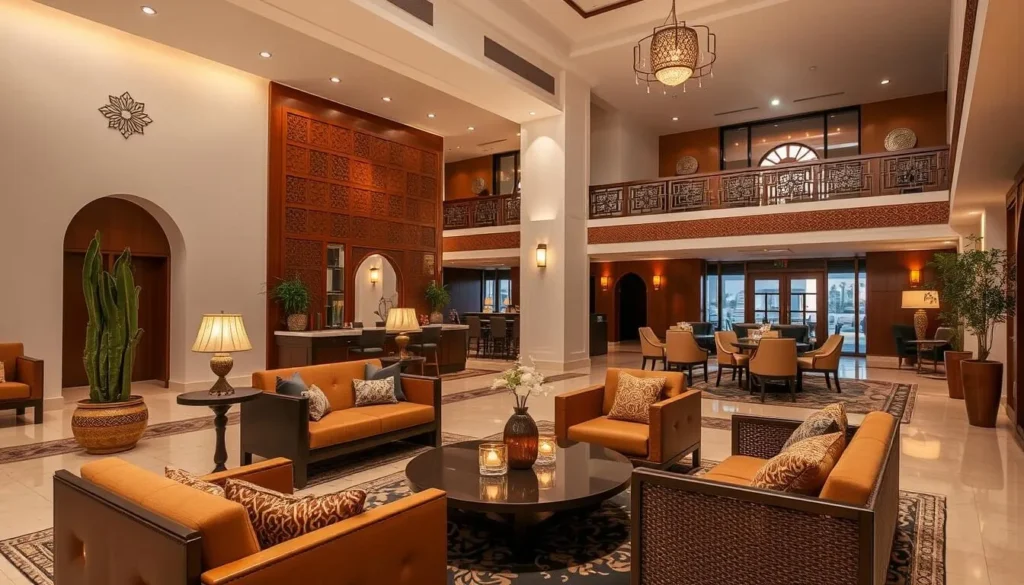
Modern hotel in Laayoune combining comfort with traditional design elements
As the administrative center of the region, Laayoune offers several business-oriented hotels that cater to both tourists and professionals. The Sahara Line Hotel provides comfortable rooms and helpful staff in a central location. Most accommodations in Laayoune are concentrated in the city center, making it easy to explore on foot.
Desert Camping
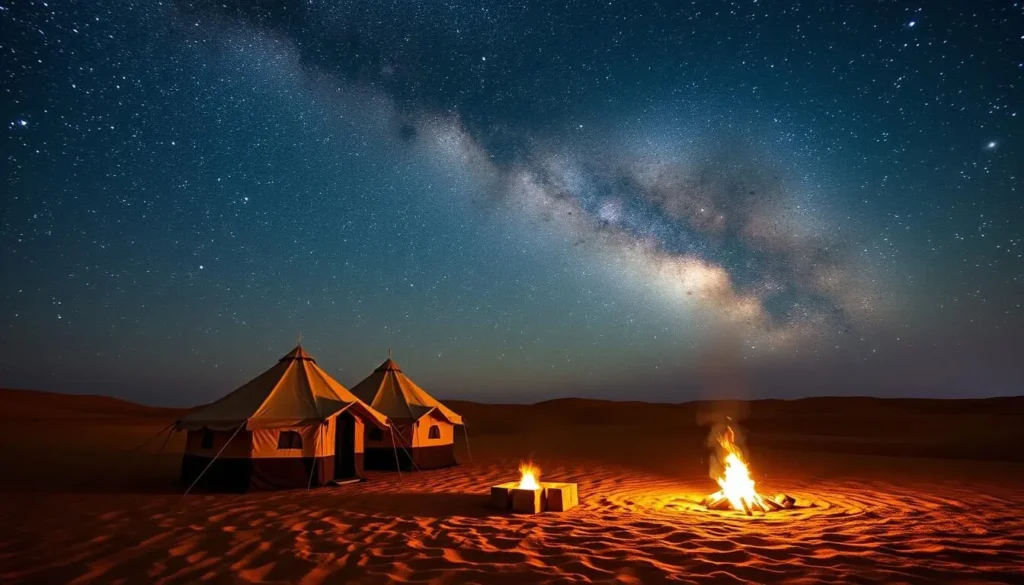
Traditional desert camp under the spectacular starry sky of the Sahara
For a truly memorable experience, consider spending a night in the desert. Several tour operators offer overnight camping excursions that include traditional tents, meals, and cultural performances. The clear desert sky provides unparalleled stargazing opportunities, while the silence of the Sahara offers a rare chance to disconnect from the modern world.
Getting Around Western Sahara
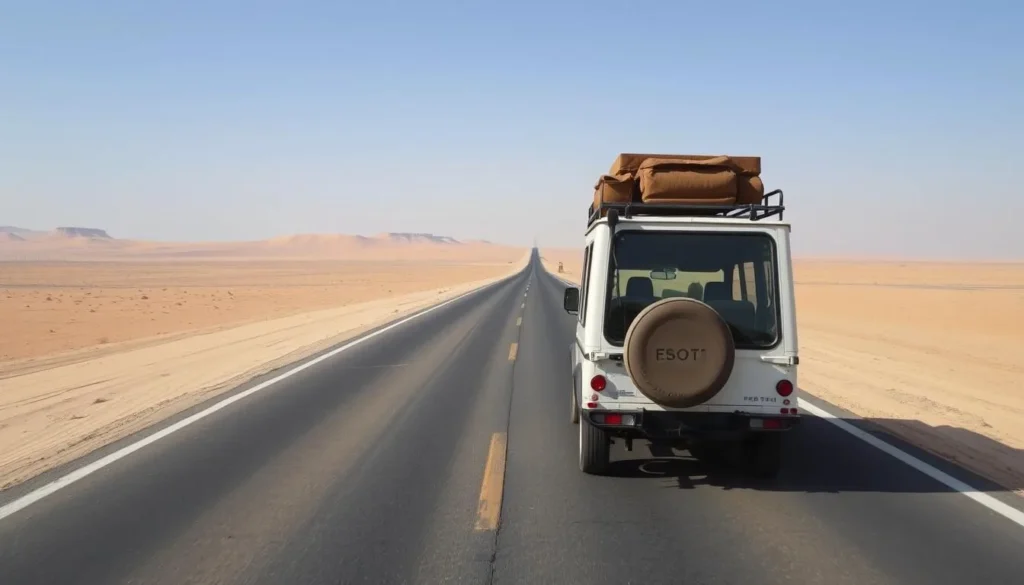
Traveling the long desert highways of Western Sahara
Navigating Western Sahara requires some planning due to the vast distances and remote nature of many attractions. The main highway connecting Laayoune to Dakhla is well-maintained, but many off-road attractions require 4WD vehicles and local knowledge.
| Transportation Option | Best For | Pros | Cons |
| Rental Car | Independent travelers | Flexibility, convenience | Navigation challenges, limited off-road access |
| 4WD with Guide | Desert excursions | Access to remote areas, local knowledge | Higher cost |
| Public Buses | Budget travel between cities | Affordable, comfortable | Limited schedule, doesn’t reach attractions |
| Shared Taxis | City transportation | Inexpensive, widely available | Can be crowded, limited range |
Explore Western Sahara Your Way
Find the best rental car options for your Western Sahara adventure.
For travel between major cities, companies like CTM and Supratours offer comfortable bus services. The journey from Laayoune to Dakhla takes approximately 9 hours. Within cities, shared taxis are the most common form of public transportation, with fares typically ranging from 5-10 MAD per ride.
For exploring remote attractions, hiring a local guide with a 4WD vehicle is highly recommended. Not only does this provide access to off-road sites, but guides also offer valuable cultural insights and can help navigate any checkpoints along the way.
Practical Tips for Visiting Western Sahara
Visa and Entry Requirements
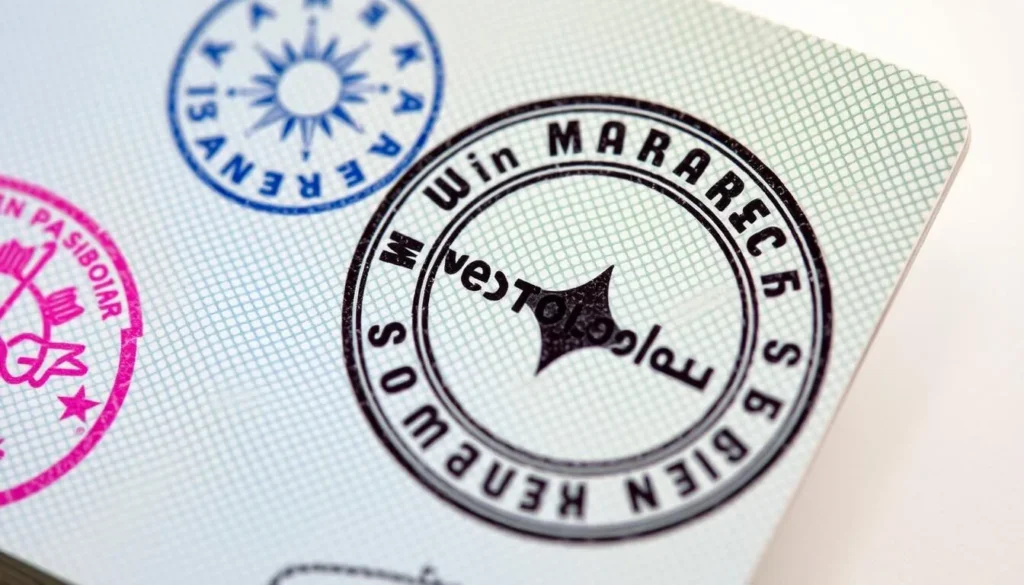
Moroccan passport stamp, which covers entry to Western Sahara
Since Morocco administers most of Western Sahara, Moroccan visa requirements apply. Many nationalities, including those from the US, EU, UK, and Canada, can enter visa-free for up to 90 days. There are no separate border formalities when entering Western Sahara from Morocco, though occasional checkpoints may require you to show your passport.
If planning to continue to Mauritania, you’ll need to arrange a Mauritanian visa in advance or obtain a visa-on-arrival at the Guerguerat border crossing (€55 for a 30-day single-entry visa, payable in euro notes only).
Currency and Costs

Moroccan Dirham, the official currency used in Western Sahara
The Moroccan Dirham (MAD) is the official currency in Western Sahara. ATMs are available in Laayoune and Dakhla, and credit cards are increasingly accepted at hotels and larger restaurants. It’s advisable to carry cash for smaller establishments and when traveling to remote areas.
Western Sahara is generally affordable by international standards. A mid-range hotel room costs around 300-600 MAD per night, while a meal at a local restaurant ranges from 50-150 MAD. Guided excursions typically cost 500-1000 MAD per person for a full day, depending on the destination and group size.
Safety and Etiquette
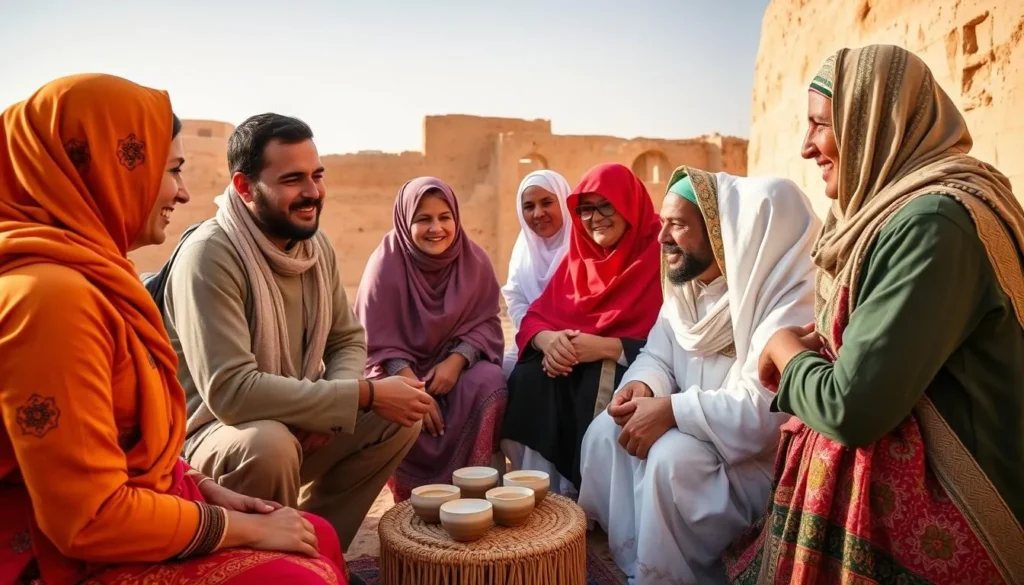
Respectful cultural exchange between visitors and local Sahrawi people
Western Sahara is generally safe for tourists, with low crime rates in populated areas. The main concerns are related to the remote nature of the region rather than security issues. Always carry sufficient water, inform someone of your travel plans, and consider hiring local guides for desert excursions.
As a predominantly Muslim region, modest dress is appreciated, particularly outside of tourist areas. Women should cover shoulders and knees, and men should avoid very short shorts. During Ramadan, be respectful by not eating, drinking, or smoking in public during daylight hours.
Photography is generally welcomed, but always ask permission before photographing people, especially in rural areas. Military installations and checkpoints should never be photographed.
Communication and Connectivity
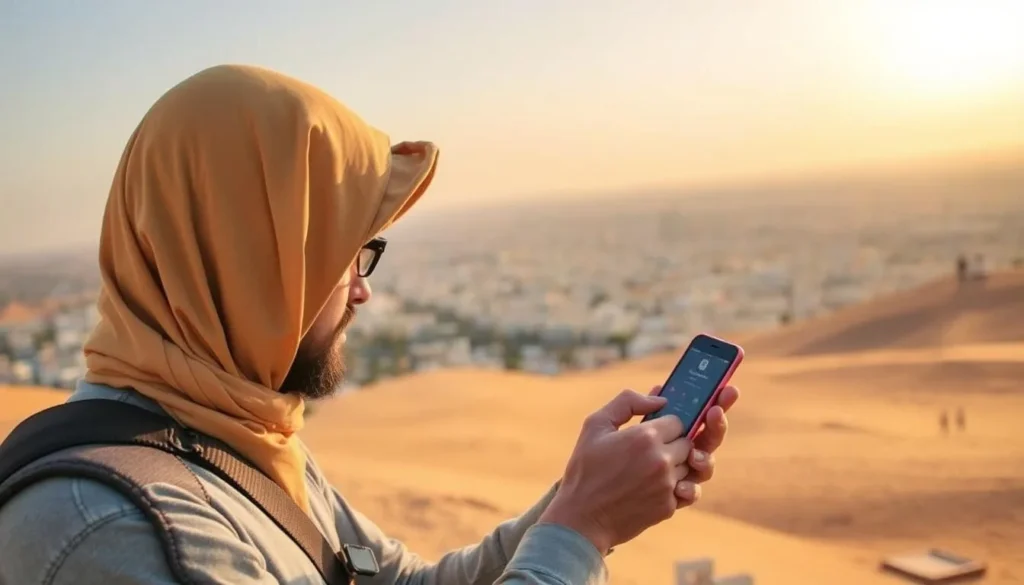
Mobile connectivity is available in major towns like Dakhla
Mobile coverage is good in major towns but can be non-existent in remote areas. Moroccan SIM cards from providers like Maroc Telecom work throughout Western Sahara and can be purchased with identification at shops in Laayoune and Dakhla. WiFi is available at most hotels and some cafes in urban areas, though connection speeds may be slower than you’re accustomed to.
The primary languages are Arabic and Hassaniya (a local Arabic dialect), with French widely understood in tourist areas. Spanish is sometimes spoken, particularly among older residents, reflecting the region’s colonial history. English is less common but increasing in tourism-related businesses.
Local Cuisine and Dining
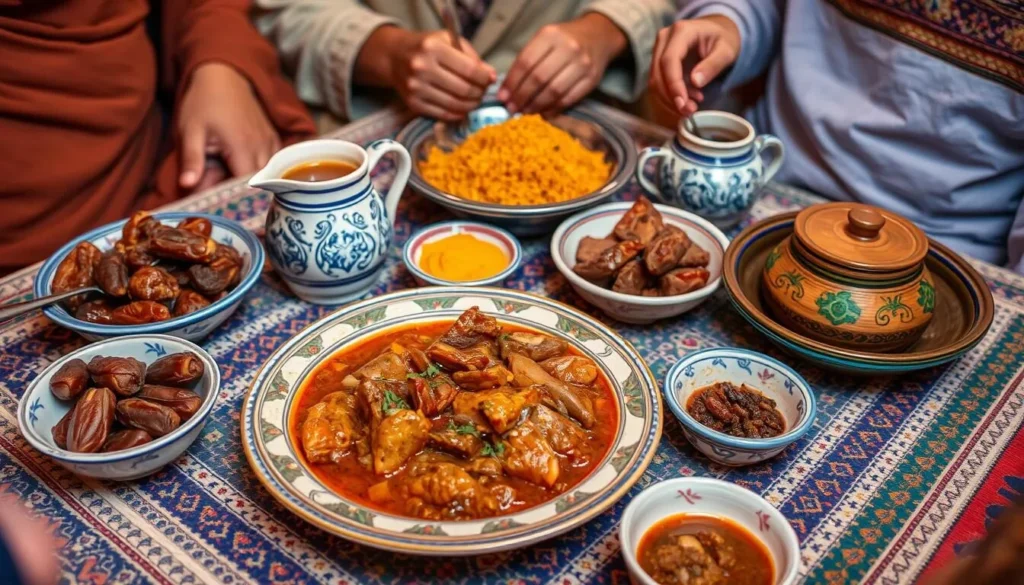
Traditional Sahrawi meal featuring camel meat tajine, couscous, and mint tea
Western Saharan cuisine blends Moroccan, Mauritanian, and Sahrawi influences, with an emphasis on ingredients that can withstand the desert climate. Meals often center around meat (particularly camel and fish along the coast), grains, and dates, with minimal fresh vegetables due to the arid environment.
Must-Try Dishes
Where to Eat
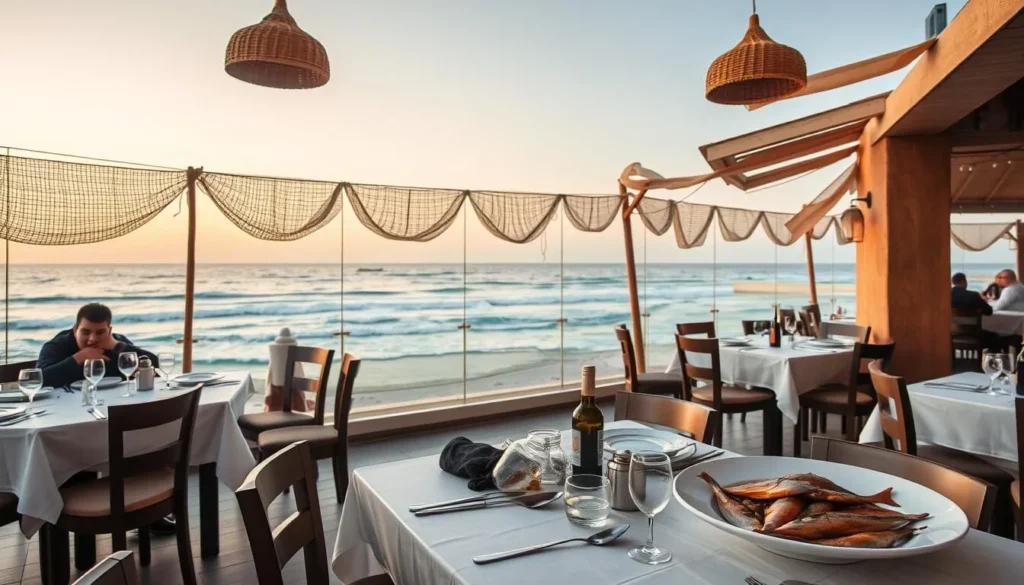
Seafood restaurant in Dakhla serving the day’s fresh catch
In Dakhla, “My Octopus” restaurant on Avenue Mohamed V is renowned for its exquisitely prepared seafood and beautiful presentation. For an authentic experience, visit the port area where simple eateries serve the day’s catch with minimal preparation but maximum flavor.
In Laayoune, Restaurant Gardenia offers a diverse menu including Moroccan, international, and even Japanese cuisine in a clean, modern setting. For more traditional fare, small family-run establishments around the central market area provide authentic local dishes at reasonable prices.
When traveling in remote areas, meals are often included in tour packages. These typically feature simple but hearty dishes prepared with local ingredients, offering an authentic taste of Sahrawi cuisine.
Ready for Your Western Sahara Adventure?
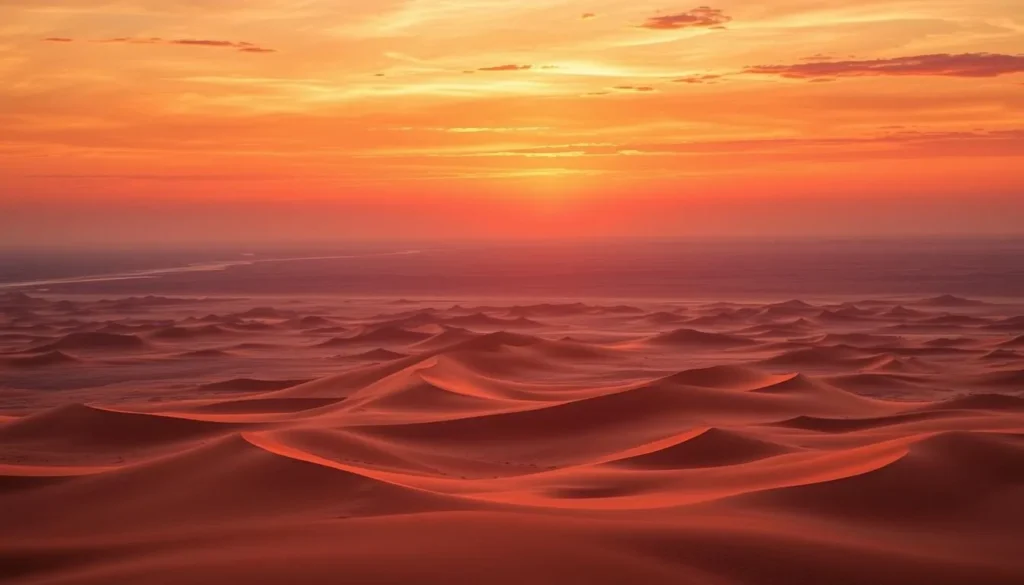
The breathtaking landscape where the Sahara Desert meets the Atlantic Ocean
Western Sahara remains one of the world’s last great frontiers for adventurous travelers. Its unique blend of desert landscapes, Atlantic coastline, and rich cultural heritage offers experiences that can’t be found elsewhere. From the thrill of kitesurfing in Dakhla’s perfect conditions to the tranquility of a desert night under countless stars, this remarkable region rewards those willing to venture beyond conventional destinations.
While traveling here requires some preparation and flexibility, the rewards are immense: authentic cultural exchanges, pristine natural wonders, and the rare feeling of exploring a place that few others have experienced. Whether you’re seeking adventure sports, cultural immersion, or simply the profound peace that only vast open spaces can provide, Western Sahara awaits with its timeless beauty and warm hospitality.
Start Planning Your Journey Today
Find flights, accommodations, and activities for an unforgettable Western Sahara experience.
